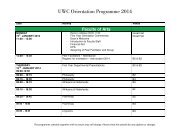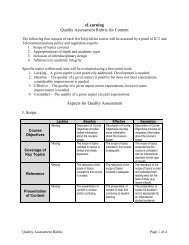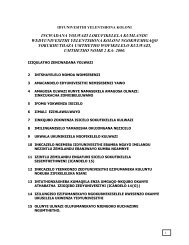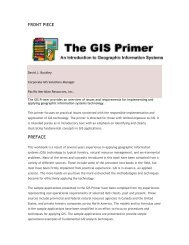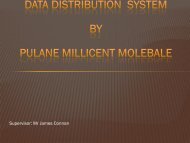Ecosystem Guidelines for Environmental Assessment
Ecosystem Guidelines for Environmental Assessment
Ecosystem Guidelines for Environmental Assessment
You also want an ePaper? Increase the reach of your titles
YUMPU automatically turns print PDFs into web optimized ePapers that Google loves.
COASTAL<br />
SANDY BEACHES<br />
& DUNE SYSTEMS<br />
COASTAL ECOSYSTEMS<br />
Barry Clark and Charl de Villiers<br />
What are the key ecological “drivers” in terms of<br />
maintaining ecosystem function, pattern or structure<br />
The natural oceanic wave climate.<br />
Mobility of sand is critical, particularly between frontal dunes and the beach, as are the seasonal<br />
cycles of deposition (summer) and erosion (winter).<br />
The deposition and decomposition of organic material such as kelp and carrion at the high water<br />
mark and on the back beach allows terrestrial animals to export energy from the beach system inland<br />
to the dunes.<br />
Sand mobility corridors (e.g. inland-trending dune fields, headland bypass and climbing-falling dunes)<br />
promote diversification of terrestrial plant species. Sand mobility also helps drive vegetation structure<br />
and successional dynamics in dune systems.<br />
Coastal thicket vegetation, as occurs on frontal dunes, is critical <strong>for</strong> maintaining ecological<br />
processes and the major biogeographical gradients - both longitudinally and in relation to the major<br />
drainage systems.<br />
What are the key issues, vulnerabilities and threats<br />
Stabilisation of naturally dynamic dune systems and sediment corridors due to infestation by<br />
rooikrans Acacia cyclops or <strong>for</strong> the purposes of property and other development has a significant impact<br />
on the integrity of coastal processes.<br />
Resort and housing developments on primary dune systems (including hummock, primary dunes,<br />
dune slack and secondary dunes) are destroying highly sensitive dune systems in certain areas. Examples<br />
of this type of development pressure can be found at Wilderness, Keurboomstrand, Hartenbos,<br />
St Francis Bay, Dana Bay and Victoria Bay.<br />
Linked to development is the disturbance of natural dune vegetation cover due to trampling, driving<br />
or earth-moving operations. This results in erosion and degradation of primary and <strong>for</strong>edunes, and<br />
mobilisation of driftsand.<br />
Infrastructure that impedes longshore drift and inshore sediment dynamics.<br />
Mortality and disturbance of sensitive beach fauna by Off-road Vehicles (ORVs).<br />
Mining - particularly diamond mining on the West Coast but also sand mining which, in turn, can give<br />
rise to the type of "downstream" disturbances that are often associated with coastal property<br />
development.<br />
Altered erosion patterns can result from the hardening of adjacent shorelines (land reclamation) and<br />
the construction of breakwaters and groynes.<br />
There is an increasing risk of coastal erosion associated with rising sea levels (and particularly when<br />
there is a combination of spring high tides, storm surges and inadequate development setback lines<br />
and degraded primary and <strong>for</strong>edunes).<br />
Harvesting of drift kelp.<br />
COLIN PATERSON-JONES<br />
28 : SANDY BEACHES & DUNE SYSTEMS



